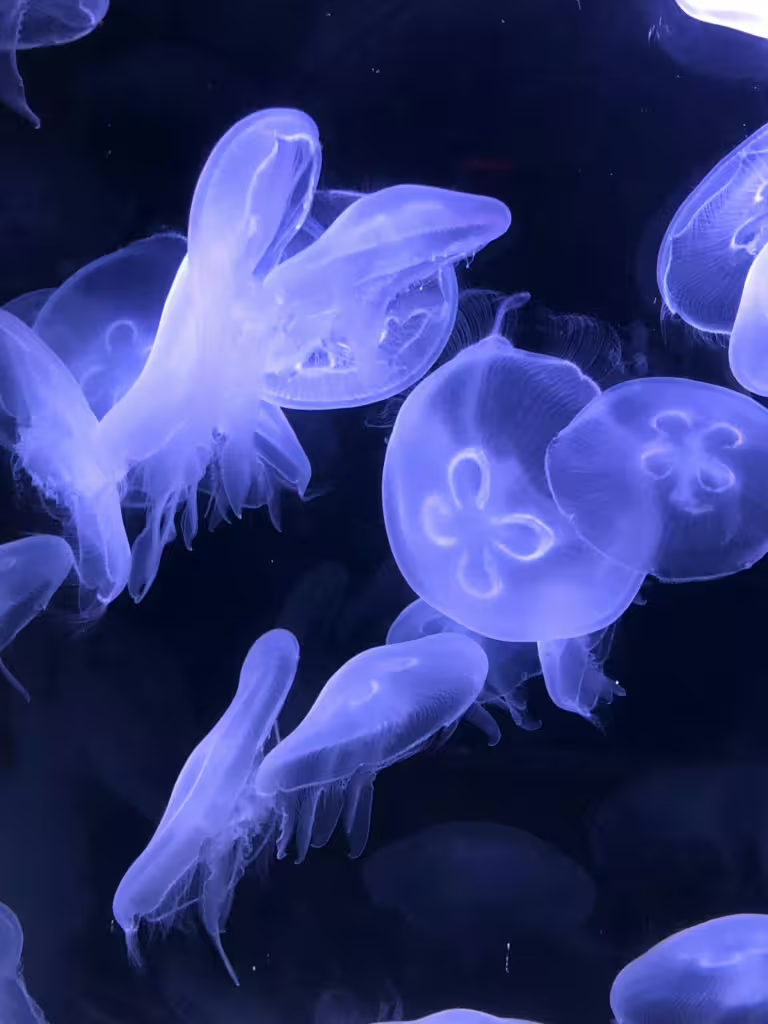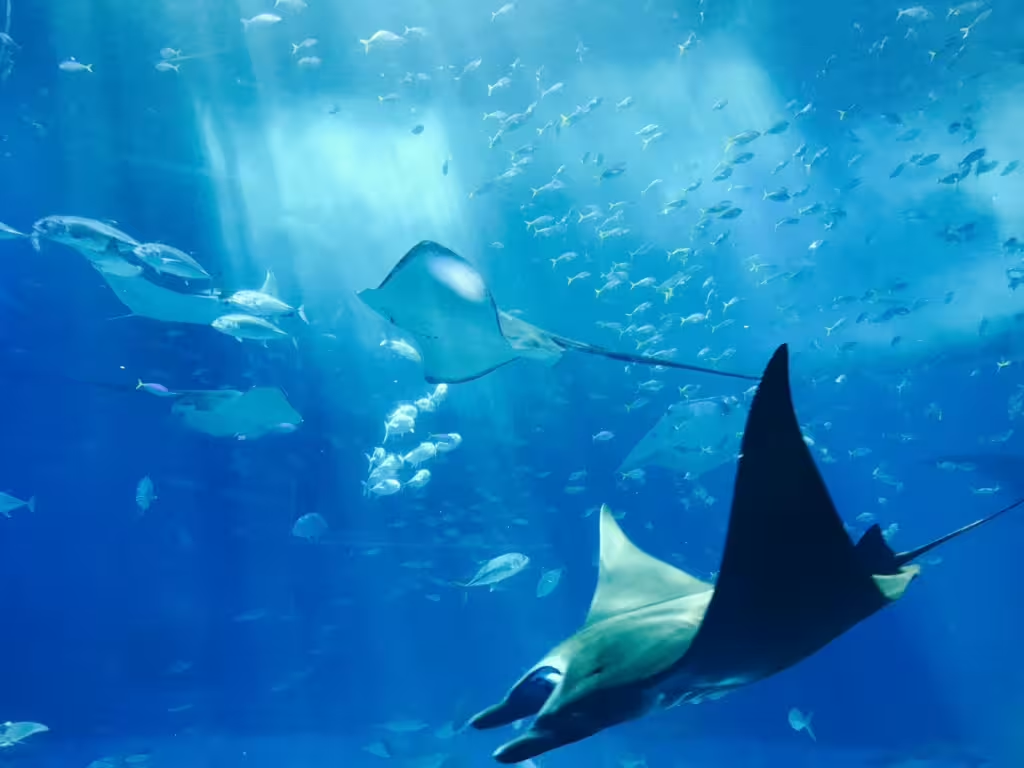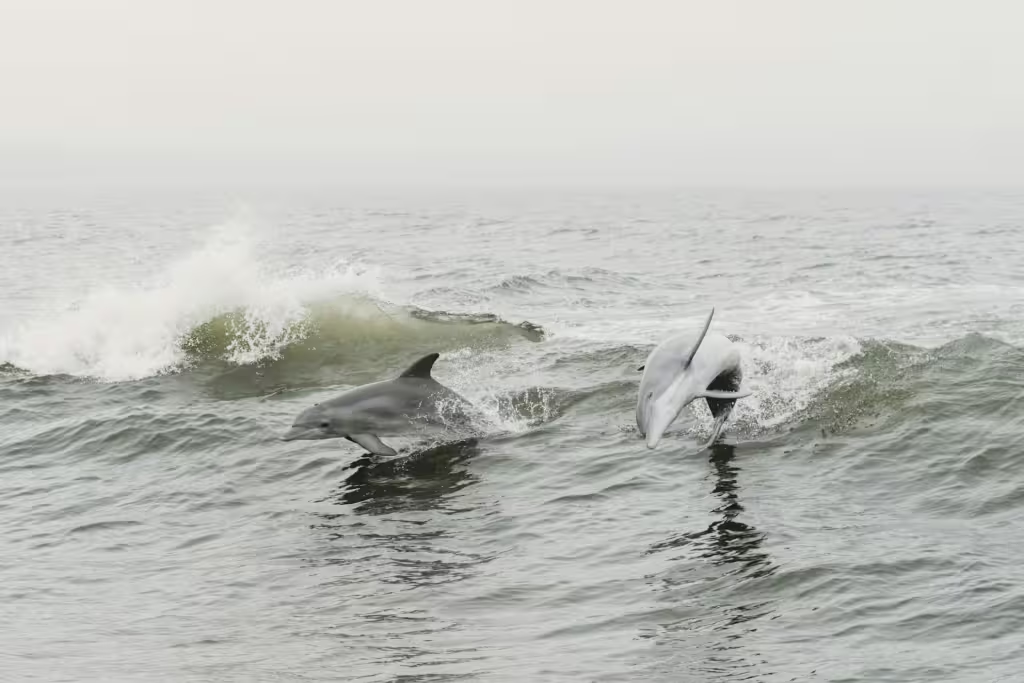Our planet’s oceans are home to a vast array of marine animals. From colossal whales to all the microscopic wonders that lurk beyond our perceptions, each and every animal that calls the ocean their home is unique in its own way. Yet, there are a number of amazing critters swimming beneath the water’s surface that are even more specialized, possessing even more amazing adaptations than most of us are not even aware of.
Indeed, the strangest and most extreme adaptations in the natural world can probably be found in Earth’s oceans, particularly among the animals that dwell there. In this article, we will explore several of these animals in great detail. We will take a deep dive into the depths to discover creatures that glow in the dark, can live virtually forever, and that can survive in near-boiling water. So come with us on this amazing excursion to learn how marine life has evolved in remarkable ways!
The Immortal Jellyfish (Turritopsis dohrnii)
Some scientific minded readers may be familiar with the so-called, immortal jellyfish, a creature that has risen out of obscurity in recent years thanks to its ability to, essentially, live forever. This simple, smallish jellyfish has developed one of nature’s most astonishing survival strategies—biological immortality. What does this mean? Well, when faced with starvation, physical damage, or aging, this tiny creature can essentially turn back the clock, reverting back to its polyp stage and effectively resetting its very life cycle.
This process, called transdifferentiation, allows the immortal jellyfish to avoid death, even from old age and theoretically could allow it to live forever. Even more interesting is the fact that this creature is not located in some hidden ocean cove somewhere on the planet, but can be found in oceans all over the world. As one might expect, this unique adaptation has been a subject of scientific research for several decades now, offering insights into aging and regenerative medicine.

The Pistol Shrimp (Alpheidae)
Ever see a shrimp with guns? Well, aside from cartoons, you probably won’t, but the pistol shrimp is kind of the next best thing. This small but deadly predator comes armed, not with Smith and Wesson revolvers, but with a single, specialized claw that shoots a bubble bullet at prey and predators. These bullets can reach speeds of up to 60 mph, which is frankly astonishing, considering the pistol shrimp’s diminutive size. The bullet bubble isn’t just fast, it’s also shockingly hot. What we mean is that, when the bubble collapses, it generates a shockwave that reaches temperatures nearly as hot as the surface of the sun. A powerful blast of this type can not only stun prey, it can kill it instantly. If that weren’t interesting enough, scientists have found that some species of pistol shrimp even use their snapping ability to communicate, creating a cacophony of underwater noise.
The Barreleye Fish (Macropinna microstoma)
Like many of the fish that live in the deepest parts of the deep ocean, the barreleye fish is quite funny looking; a descriptor that you will soon understand has two meanings attached to it. This fish has a transparent, fluid-filled head that allows it to look upwards through its own skull, giving it a rather unusual appearance to say the least. However, there is a good reason behind this kooky adaptation. This evolutionary trait helps the barreleye fish to detect the silhouettes of prey against the dim light filtering down from the ocean zones above. The tubular eyes are actually quite mobile and can also rotate forward if need be, giving the barreleye an advantage when tracking food. Bizarre though it may seem, this anatomy is crucial for survival in the dark depths where visibility is minimal.
The Dumbo Octopus (Grimpoteuthis)
Named after the famous Disney elephant of the same name, the Dumbo octopus has distinctive, ear-like fins that stick out the sides of its mantle, allowing it to swim gracefully in the deep sea. Unlike other octopuses, the Dumbo does not use jet propulsion to get around, but instead flaps its fins, slowly, conserving energy in the low-food environment of the abyssal zone it calls home. Another trait that sets it apart from octopuses in the upper sea levels, is that it also lacks an ink sac. This is likely because the remarkable mollusk has so few natural predators to worry about in these extreme depths.
The Leafy Sea Dragon (Phycodurus eques)
Looking like a cross between a Kingdra and a Chinese Lung Dragon, this mesmerizing marine creature is kind of a little bit of both. This relative of the seahorse has evolved elaborate leaf-like appendages that make it nearly indistinguishable from drifting seaweed. Unlike true seahorses, however, the leafy sea dragon moves by undulating small, transparent fins, not by gripping with its tail. This graceful swimming gives the leafy sea dragon an almost ethereal, ghostly appearance. Camouflage like this is essential for avoiding predators that lurk in the kelp forests of southern Australia where it makes its home.
The Gulper Eel (Eurypharynx pelecanoides)
Another deep-sea dweller with a terrifying visage, the gulper eel is basically the stuff of nightmares. This animal has an enormous, expandable mouth that allows it to swallow prey much larger than itself. Its loosely hinged jaw allows it to take in a vast volume of water along with its meal. This adaptation essentially allows the fish to gorge itself whenever it can, ensuring that the gulper eel never misses an opportunity to feed, even when food is scarce down in the dark. When startled, it can inflate its body to appear larger, warding off predators and scaring the heck out of curious marine biologists.

The Yeti Crab (Kiwa hirsuta)
Discovered near hydrothermal vents in the South Pacific, the yeti crab is one of the only animals that can live in the boiling, toxic waters of the deep ocean. So-named because its body is covered in silky, hair-like filaments, or setae, this crab has a wealth of helpful bacteria on its body that help it to survive. These bacteria are able to detoxify the minerals that surround these hydrothermal vents and may even serve as a food source for the crab.The yeti hairs trap the bacteria, a unique adaptation worthy of such a unique ecosystem.
The Sea Pig (Scotoplanes)
Fun fact: the sea pig doesn’t really look like a pig at all; not really anyway. Resembling a gelatinous, pink balloon with tiny legs, the sea pig is actually a type of deep-sea sea cucumber that feeds on detritus that falls from the ocean above. If you’ve never seen a walking cucumber before, you might be giddy with delight to watch as the sea pig uses its specialized tube feet to amble about. The thing is, these tube feet aren’t exactly meant for locomotion, but are used to detect chemical traces of food. In the deep-sea ecosystem, where scavengers play a crucial role in nutrient recycling, sea pigs serve as vital decomposers. This means they help to break down organic matter and redistribute it back into the environment.
How Marine Life Is Adapting to Climate Change and Pollution
Human beings may be destroying the planet with each passing year, but animals are finding ways to adapt and beat the rising tide of climate change, pollution, and the like. Indeed, many marine species have adeptly adapted to the challenges of climate change, ocean acidification, and pollution. Though rising ocean temperatures, plastic contamination, and habitat destruction are putting many oceanic organisms in grave danger, they are also forcing many species to evolve in surprising ways. Such adaptations are critical for the survival of numerous marine organisms and the overall health of ocean ecosystems.
Coral Bleaching Resistance: Though coral bleaching is a massive marine issue worldwide, some corals are developing heat-resistant symbiotic algae that will essentially allow them to negate the effects entirely. These bacteria enable the coral to be able to withstand rising ocean temperatures and avoid bleaching. Scientists have already begun studying these resilient corals so that they can find ways to aid the rapidly diminishing coral reefs.
Many such marine think tankss have even begun to test selective breeding programs in order to cultivate corals that have a higher tolerance for heat stress. Unfortunately, though this adaptation helps in the short term, prolonged exposure to extreme temperatures could still threaten coral survival. Moreover, it doesn’t look like the Earth is going to chill out anytime soon. The truth is, restoring degraded reefs and reducing local stressors like pollution and overfishing are crucial steps that need to be taken in order to protect these vital marine ecosystems.
Plastic-Consuming Bacteria: Plastic may be a pervasive pollution problem, but modern researchers have discovered bacteria in the ocean that can actually break it down. The ability of a living organism to break down plastics, offers humanity a potential natural solution to an almost insurmountable issue. It isn’t just bacteria, either, some species of fungi have begun to evolve so that they can use plastic as an energy source. These microbes have been found in multiple environments all over the globe, including deep-sea trenches and coastal regions where plastic waste tends to accumulates.
Today, scientists are exploring ways to enhance the efficiency of these plastic-degrading organisms to aid in cleaning up the oceans. Laboratory experiments have shown that certain strains of bacteria, such as Ideonella sakaiensis, can degrade PET plastics at an accelerated rate. Understanding all we can about the genetic mechanisms behind this ability could lead to the development of bioengineered solutions for large-scale plastic waste management; something our planet absolutely needs like yesterday. While this discovery is promising, the rate of plastic pollution still far exceeds the natural degradation process, which means more work would need to be done…and soon, if something meaningful is to occur.
Migration Patterns: Many fish species, including cod and tuna, have shifted their migratory routes toward cooler waters as ocean temperatures rise. This not only impacts global fisheries and food security, it affects every animal that lives in and around the ecosystems on the fishes’ routes. Some species are also migrating deeper into the ocean to escape warming surface waters. This shift has been observed in various marine organisms, including plankton, which form the base of the marine food web. When the plankton dies off, everything else will collapse on top of it; including us. Many human beings depend on fish a staple food source, you see, so any danger to their breeding process poses a big risk to many, many people. Fortunately, researchers are using satellite tracking and ocean temperature modeling to predict future migration trends and see if anything can be done. At the very least, it may help policymakers implement adaptive strategies to sustain fisheries and marine biodiversity.
Ocean Acidification Adaptations: Some shell-forming organisms, like pteropods, are altering the composition of their shells to cope with more acidic waters. This ocean acidification is generally caused by increased CO2 absorption. Unfortunately, these new shell structures make these animals more vulnerable to predators. Moreover, it isn’t just pteropods being affected, but oysters, mussels, and certain species of plankton; a creature that many other creatures depend on for food. Today, scientists are studying the long-term implications of these adaptations to determine whether they will be sufficient to counteract the continued acidification of ocean waters. Only time will tell if this research helps them to find a way to reverse this dangerous process.

True Investigator Says…
As you can see, the ocean is a treasure trove of extraordinary animal adaptations! These creative critters demonstrating an incredible resilience and ingenuity, even in the face of difficult habitats and widely-destructive human practices. The sad truth, however, is that, while these adaptations help species survive, the accelerating impact of climate change and human activity poses significant threats to animals all across the ocean. Nevertheless, by studying these remarkable creatures, scientists continue to gain insight into evolution and potential strategies that may help aid in the conservation of marine ecosystems. Protecting our oceans is essential to ensuring that these weird and wonderful species continue to thrive for generations to come.
Discover more from TrueInvestigator
Subscribe to get the latest posts sent to your email.


